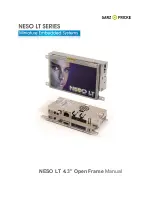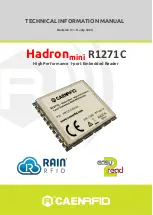
ET-2200 Series Ethernet I/O Modules
Copyright © 2020 ICP DAS CO., Ltd. All Rights Reserved.
-107 -
6.2
Modbus Message Structure
Modbus devices communicate using a master-slave (client-server) technique in which only one
device (the master/client) can initiate transactions (called queries). The other devices (slaves/servers)
respond by either supplying the requested data to the master, or by taking the action requested in
the query.
A query from a master will consist of a slave, or broadcast, address, a function code defining the
requested action, any required data, and an error checking field. A response from a slave consists of
fields confirming the action taken, any data to be returned, and an error checking field.
The Modbus/TCP Message Structure
Bytes 00 - 05
Bytes 06 - 11
6-byte header
RTU Data
The Leading 6 bytes of a Modbus/TCP Protocol Query
Byte 00
Byte 01
Byte 02
Byte 03
Byte 04
Byte 05
Transaction Identifier
Protocol Identifier
Length Field
(upper byte )
Length Field
(lower byte)
Transaction identifier =
Assigned by the Modbus/TCP master (client)
Protocol identifier =
0
Length field (upper byte) =
0 (since all messages are smaller than 256)
Length field (lower byte) =
The number of following RTU data bytes
















































